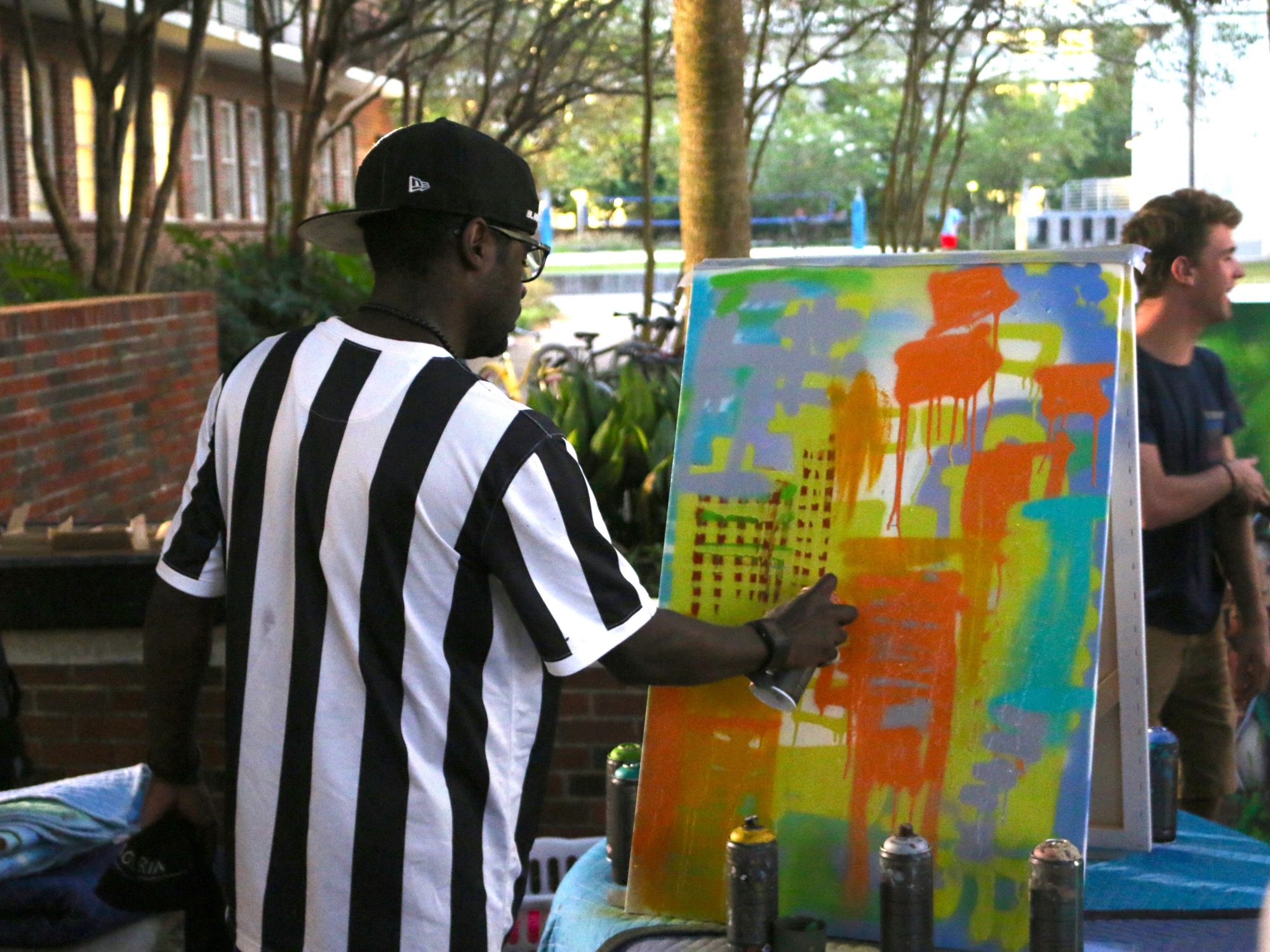
It’s a rare occasion that students are encouraged to put down their pencils for cans of spray-paint in the middle of campus. Toddy and Val from Brazilian graffiti collective Grupo OPNI visited Tulane the week of September 10 to simultaneously share, receive, and create a powerful message of social justice in several live art demonstrations. Before bringing out empty canvases and cans of paint, the two men discussed the origins and purpose of the artist group they began together in 1997.
Grupo OPNI describes themselves as a “graffiti artist collective from São Mateus, Brazil, with a mission of using art as a medium to celebrate Afro Brazilian culture and a vehicle to give voice for disenfranchised groups from the periphery.” The 20-person group found their inspiration in the violent realities of São Mateus, a favela on the outskirts of São Paulo in which they all originally resided.
At the time of Grupo OPNI’s formation, their native São Mateus was the most violent neighborhood in all of Brazil. “In our neighborhood, we never had access to art. The only options for young people were to work with drug trafficking or something else that was dangerous and violent,” Toddy explained to the group in the Q&A session on Tulane’s Bruff Quad. “We saw our experiences as the only ones we would ever have access to. We saw a lot of death, drug exchanges, and armed children while growing up, and we thought that was our only option.” Confronted with the startling, presumed-inevitable fate of dying young, Toddy and Val chose not to give in but to stand up.

To confront the hardships of their neighborhood, the young men made collectives. “We had collectives for all of the things that took our mind off the roughness of the neighborhood, whether it was biking or drawing, or eventually tagging,” said Val. Through graffiti and its sister form of tagging (wherein the artist’s name or another personal identifier is emblazoned on a surface), the group of friends comprising Grupo OPNI found their way out of marginality and into the public sphere.
The word OPNI is an acronym that speaks to the group’s self-identification as “the other” or “outsiders” within Brazil and even within São Paulo, roughly meaning “alien taggers.” They believed their neighborhood to be seen as filled with people who were aliens to the rest of Brazilian society.
“Representations of our neighborhood online and in big media was always something negative. It was always stories of violence and poverty, so people never got to see the rest of what our culture is really like,” Toddy told the group. The artists, frustrated by the typical representation of their community, reclaimed their collective identity by making themselves known in the physical and cultural landscape. Their art was born out of a desire to include marginalized neighborhoods in mainstream spaces, and continues to come to life with tagging and graffiti centered on images and messages crucial to the collective’s mission. They began by portraying figures of their neighborhood—many of them strong women whom the men respect and believe to represent São Mateus—in portraits that incorporate the themes of anti-racism, anti-discrimination, and anti-sexism.

After an inspiring account of their art’s origins and intent, Val and Toddy welcomed students to join them in a live art demonstration they could all contribute to. Over upbeat Brazilian music blasting from Val’s speakers, students passed around the paint and took turns leaving their mark on the two canvases presented by Grupo OPNI.
Far from a cut-and-dry seminar or lecture, Grupo OPNI’s session enabled students to better understand their work by allowing them to be a part of it. “My favorite part was how interactive the whole experience was,” says Tulane student Caroline Kohl. “I loved how they taught us how to spray paint and then we all got to work together to complete a piece of street art on a canvas. I think it is great that Tulane students had the opportunity to speak with them about how they were able to rise up in their community and create such a vital form of expression despite the limitations of their favela.”
While they worked, Toddy and Val commented on different techniques of spraying and otherwise manipulating the active creation in between telling stories of how they typically find inspiration and use their medium to communicate their message. Following this engaging portion, the men finished up the portraits, inspired by their home for the week, Tulane.

“The whole event was really cool because it allowed Tulane’s very restricted bubble to interact with something completely outside its sphere of influence,” says Changemaker RLC member Zachary Kanzler of the event’s impact. “The Grupo Opni members who presented on campus were humble, friendly, and brought with them a rare perspective on poverty and perseverance. They had their fates decided for them, but decided to break away from the violence of their home and to make art instead.”
